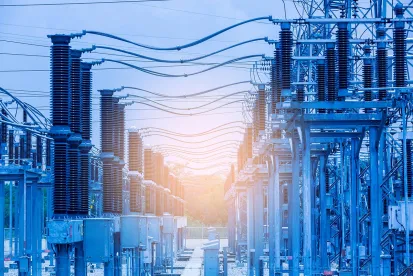Starting in late February, over 2.7 million Texas households were left without energy and over 100 people died as a severe winter storm caused a series of rolling blackouts across Texas, drawing national attention to the state’s energy grid. While some leaders blamed the state-wide outages on wind and solar, an emerging expert consensus suggests that multiple cascading factors—including non-winterized power plants and the state’s deregulated, independent grid system—culminated in the energy crisis. Now, several weeks out from the crisis, new solar opportunities and challenges are beginning to take shape in the Lone Star State. While Texas lawmakers have advanced legislative proposals to impose additional costs and burdens on solar providers, private demand for solar energy solutions—especially rooftop solar—has increased as households across Texas seek independence from their state’s independent grid.
At the outset of the crisis, solar and other forms of renewable energy took the spotlight after state leadership argued that the blackouts were due in part (or in whole) to poor solar and wind performance. Texas Governor Greg Abbott, for example, maintained in a television interview, "Our wind and our solar got shut down and they were collectively more than 10% of our power grid and that thrust Texas into a situation where it was lacking power in a statewide basis." Abbott’s takeaway? Going forward, solar energy and other renewables should play less of a role relative to fossil fuels: "It just shows that fossil fuel is necessary for the state of Texas as well as other states.”
Wind and solar account for only 21.1% of Texas’ total electricity output, whereas coal and natural gas supply a combined 67.7% of the total electricity output in the state. While wind turbines and solar panels in the state did in fact suffer from performance-related issues during the storm, accounting for 13% of the total lost power at the height of the crisis, fossil fuels—which make up a significantly larger percentage of the state’s energy output—did not fare much better, accounting for nearly twice as many outages as the renewable sources. At the peak of the crisis, Bill Magness, CEO of the Electric Reliability Council of Texas (ERCOT), Texas’ leading grid operator, stated, "It appears that a lot of the generation that has gone offline today has been primarily due to issues on the natural gas system at large. From getting the gas from the wellheads, through the pipes to generators and to consumers for heating natural gas.”
An emerging expert consensus maintains that multiple cascading factors culminated in the state’s energy crisis in February. For one, the state’s electricity grid was not properly “winterized,” or built to withstand both the physical and demand-based pressures that occur during cold snaps. As temperatures dropped to record lows in Texas, key instrumentation at several of the state’s major coal plants, nuclear power plants, and natural gas plants froze over while demand surged as consumers struggled to stay warm. As Joshua Rhodes, an energy researcher at the University of Texas at Austin, explained to Greentech Media, ERCOT was primarily designed to meet summer peaks—with high demand for air conditioning and no demand for heating—and ERCOT was not prepared to withstand extreme winter temperatures, which are instead associated with high demand for both electricity and heat.
Additionally, Texas’ independent utility grid played a substantial role in the state’s February energy crisis. All of the other 47 states in the continental United States connect their grids to either the Eastern Interconnection grid or the Western Interconnection grid, and these multi-state systems maintain the ability to transmit power from one region to another, serving as a useful safeguard against grid failures during extreme, relatively local weather events. Texas, however, has maintained a standalone grid—operated by ERCOT—since the 1930s, when President Franklin D. Roosevelt signed the Federal Power Act to regulate interstate electricity sales. Under the Commerce Clause of the United States Constitution, the federal government only has the power to regulate activities which are “with foreign Nations, and among the several States.” Therefore, by limiting the sale and provision of energy to Texas residents, ERCOT created what Mr. Magness describes as an “energy island” within the continental United States. Because ERCOT does not provide energy across state lines and is therefore not involved in interstate commerce, Texas has escaped the federal regulatory reach of the Federal Energy Regulatory Commission (FERC) for decades, and the state has utilized its independence from federal oversight to pursue a highly deregulated grid model without any federal interference. While this deregulated, highly competition-based energy system provides most Texan consumers with several energy retailer options, this model also comes with a price as those same consumers cannot rely on energy coming from out of state in the event of an emergency. Due to the extreme demand, in-state supply crises, and the lack of unimpacted, consistent out-of-state supply in late February, millions of households went without power, while households fortunate enough to receive power saw prices surge from $20 to $9,000 per megawatt-hour.
Since the energy crisis, Texas lawmakers have advanced a number of proposals and amendments to prevent similar, or more severe, crises in the future while maintaining energy independence from the rest of the continental United States including proposals to winterize every power generator in Texas, requiring better communication from utilities to customers during long outages, and the restructuring of ERCOT’s board. One particularly noteworthy provision of the Texas Senate-approved bill would require renewable sources such as wind and solar to purchase ancillary services, such as transmission costs, and replacement power sufficient to manage load variability, making the operation of renewable energy sources more costly. This proposal contrasts strongly with the above-stated relative reliability of renewable sources during the energy crisis versus the natural gas shortages. If passed, this resolution will increase the costs for renewable energy producers to operate in the state, even as ERCOT’s costs for ancillary services have decreased and even as the number of wind and solar providers has increased. While this would not impact an individual installing solar panels on their own home, it would make the market more costly for large-scale operations and net metering facilities that offer renewable energy options to lower-income families and others who are not able to generate the energy on their own homes. As Texas remains the country’s leading producer of natural gas, this is not a surprising step for Texas to utilize its energy independence in order to protect its most valuable industry as the Biden administration works to introduce new ‘green’ initiatives. However, by taking this step, Texas would be turning its back on its residents and consumers in the immediate aftermath of an energy crisis by digging its heels further into the ground, resisting the transition to renewable sources taking place across the country.
In the weeks since the height of the crisis, nevertheless, many disgruntled Texans have sought personal independence from their state’s independent grid, as evidenced by a significant surge in demand for rooftop solar panels. After the cold snap in February, solar services provider Sunrun—which owns about 9% of the US residential solar market share—reported a 350% increase in traffic to its website from the state of Texas. Likewise, on EnergySage.com, the number of solar panel and solar battery quotes given to Texas customers increased by 392% in recent weeks. As the residential-scale solar market in Texas has boomed, so too has the market for neighborhood-scale renewable microgrids, according to Bloom Energy, which runs nearly 100 microgrids across the country. Sharelynn Moore, executive vice president of Bloom Energy, told NBC News, “We’ve been on the phone with county commissioners [in Texas] and large customers. We have many pricing proposals out with a lot of customers.”




 />i
/>i

